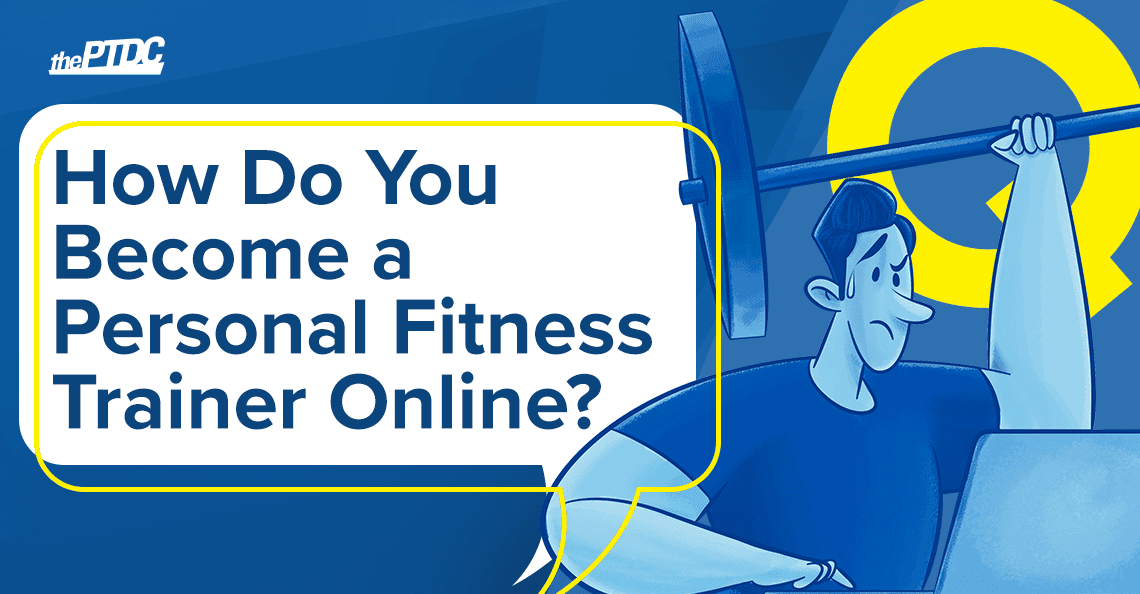 Steve Martin had a bit that began:
Steve Martin had a bit that began:
“You can be a millionaire—and never pay taxes!”
Then he explains step one: “First, get a million dollars …”
It’s funny when he says it.
Now I’m going to answer the question, “How do you become a personal fitness trainer online?”
My answer, no joke: “Take money, deliver your service, and provide support.”
That is it. That’s the essence.
My point is that people tend to overthink this. I know there are thousands of you out there, trainers who want to take control of your schedule, your income, your life.
And maybe you know that you’re qualified, and maybe you know others who’ve done this.
But you’re hesitant, unsure, and worried about a thousand things.
Can you really make a go of this? The answer is yes.
But first you have to break the process down into its simplest parts.
- Money
- Service
- Support
Of course, there are a lot of things to learn—what business model, what kind of clients, pricing, packaging. There are entire books about all of that. I’ve written a few myself.
So don’t think about all that yet.
Don’t even think about how your friend did it. It’s tempting to copy their way. But if you copy someone without knowing their full story—why they do it this way, what thought went into it—it’s going to be miserable for you.
You’d have a lot of company in your misery, because too many people are just copying someone, who copied someone, who copied someone. And you end up with a purple monkey dishwasher.
It's nuts. That’s why I stress the basic components. It’s clarifying.
Take money, deliver a service, provide support.
How to become a personal fitness trainer online (three steps)
1. Take money
Keep it easy and cheap. PayPal or Venmo (keep in mind Venmo is only available in the U.S.). Don’t sign up for some “free” service where you pay when you receive money (like credit cards).
With the big two, PayPal or Venmo, the money is deposited in your account you can withdraw it for free. That's it, you're done. Maybe you've got some sort of equivalent in your country.
If you think you want to take credit cards, fine. Just remember that 3 percent or whatever they’re taking is part of your cost of doing business. Incorporate those fees in your prices.
2. Deliver your service
Am I being too simplistic? Good. That’s my point. You don’t need new software to start delivering your service.
You don’t want to learn a new system. Neither do your clients. Nobody wants to download another freaking app.
Don’t put unnatural steps in the way of starting your business, of signing up clients. Maybe later you can implement software to be more efficient.
Key point: Later. Right now, keep it simple.
At the start, all you need is to send a workout program, maybe a nutrition plan, or simple guidelines. Fine, use Microsoft Excel or Google Drive. Not complicated.
You already use those things and so do your clients. Get started, send it to them today, and haven’t spent a cent. You're done.
3. Provide support
Again, you don't need a new way to send a message. Some of these training software systems have some chat or messaging service built in. And nobody uses it.
Seems nice, having everything in one program, but we’ve surveyed thousands of people and most don’t use it. It’s unnatural to the client. (And who wants another place to check?)
Online trainers stick with texting, or WhatsApp, or email or Facebook Messenger. Use whatever you use already.
So these trainers are still using Facebook Messenger, or text message or WhatsApp, or email or whatever you're using already. Or whatever your client prefers.
Once you take care of those three concerns—payment, delivery, support—you can focus on finding clients.
Nothing happens until you make a sale. Then you can start thinking about ways to do it all a bit better.
Think about it—until you start training clients online, you have no idea what you need or don’t need.
Shopping for software or agonizing over a payment system without knowing what aspects of those services you’ll need is backwards.
So get started, get some clients.
It’s all about mindset. You’re fired up to make this new life happen. You’re nervous and want to direct that energy toward something, like how to handle the money flowing in. This is called productive procrastination.
That’s a very human trait—when we face the unknown, face a transition, we do things that give us a sense of control as a sort of excuse for not taking action. Because taking action is scary.
Starting is simpler and easier than you think. The first step is to find a client.
So get started.
Learn more: Get answers to more online trainer questions.










